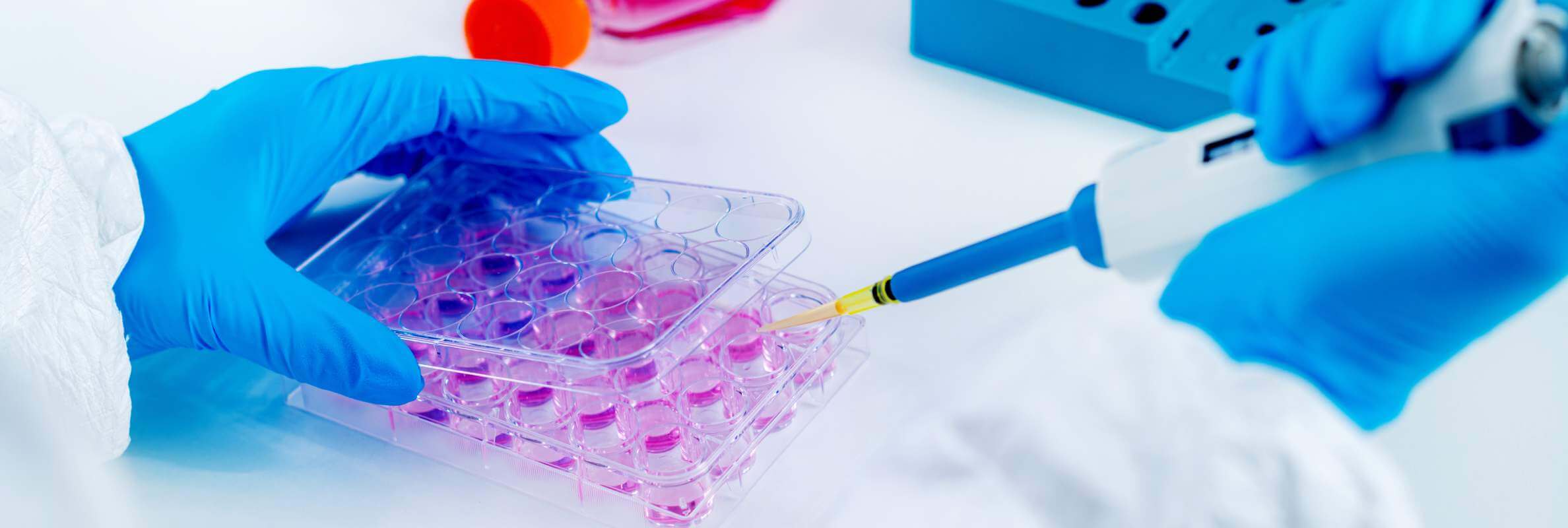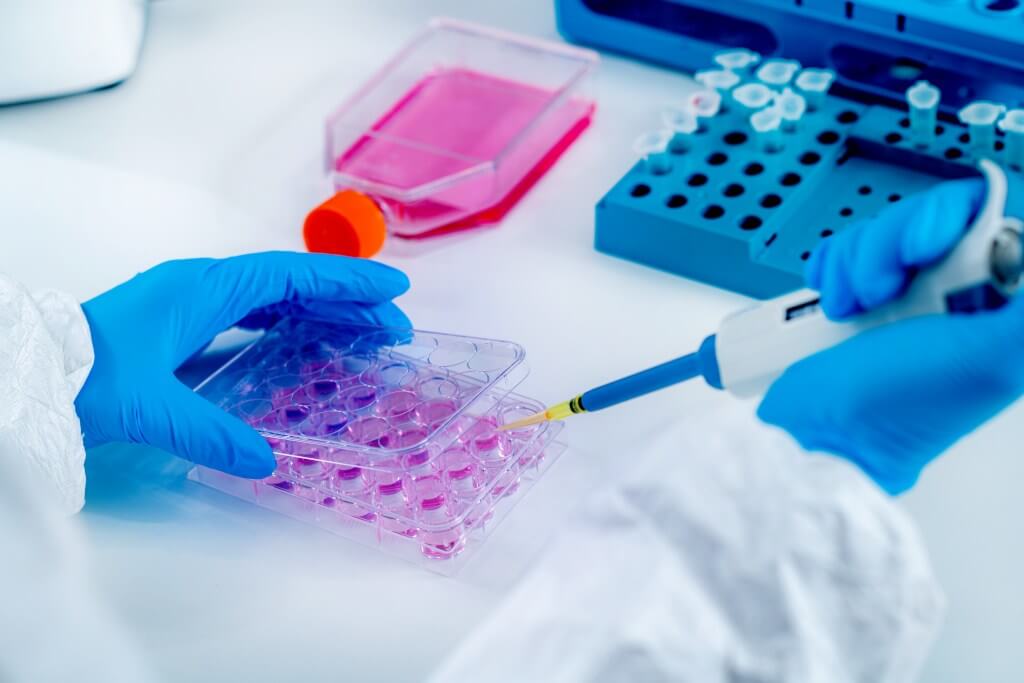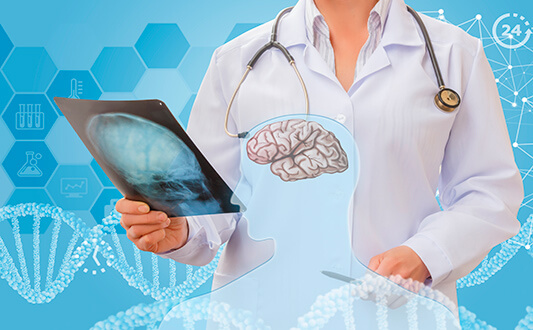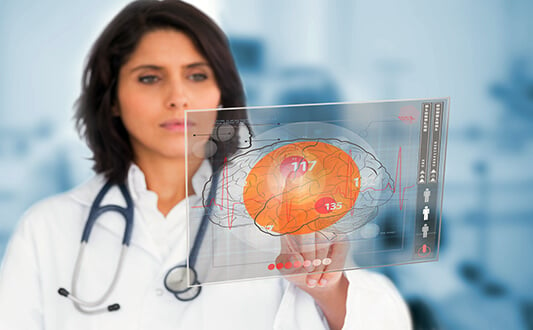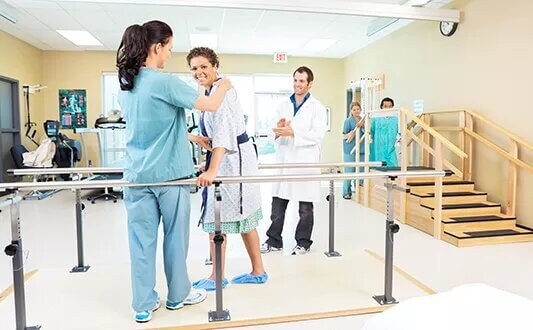- Stem Cell Mechanisms of Action in ALS
- Types of Stem Cells Used in ALS
- Stem Cell Manufacturing and Processing in ALS Treatment
- Stem Cells Delivery Methods in ALS Treatment
- Clinical Trials for Stem Cell Therapy for ALS
- Practical Observations: Professor Stehling on Stem Cell Therapy for ALS
- The Results of ALS Treatment With Stem Cells Abroad
Living with amyotrophic lateral sclerosis (ALS) presents one of medicine's most heart-wrenching scenarios. Imagine being fully aware and mentally sharp, yet watching as your body gradually loses its ability to perform the simplest tasks – from walking and talking to breathing. This creates an emotional burden not only for patients but for their families as well. What makes ALS particularly challenging to treat is its unpredictable nature – in 90% of cases, it appears without any family history or other risk factors. Although there is still no cure for the disease, there is hope on the horizon. Stem cell therapy for ALS patients has emerged as a groundbreaking approach, offering new possibilities for managing this complex condition. This article explores how stem cell treatment for ALS provides hope where traditional methods have fallen short.
Stem Cell Mechanisms of Action in ALS
Stem cells are remarkable for their ability to help ALS patients in several ways simultaneously – think of them as tiny repair specialists working throughout your nervous system. Let's explore how these cells fight ALS through four main mechanisms.
First, stem cells create a protective shield around your neurons (neuroprotection, combating the neurodegenerative disease). Imagine them as dedicated bodyguards, surrounding and defending your healthy nerve cells from further damage. This protection helps maintain the existing muscle function longer.
Second, these cells act as natural anti-inflammatory agents. In ALS, inflammation damages nerve cells, like a fire spreading through a forest. SCs work like specialized firefighters, reducing harmful inflammation and creating a healthier environment for your nervous cells.
Third, stem cells are tiny factories producing growth factors – special proteins that help nerve cells survive and function better. These growth factors are like essential nutrients, feeding and strengthening your remaining motor neurons.
Finally, SCs have the remarkable ability to replace some damaged cells. While they can't completely reverse the neurodegenerative disease, they can help repair some affected neurons or nerve fibers and potentially create new connections between healthy neurons.
Unlike traditional treatments that only slow ALS progression, stem cell therapy offers a more comprehensive approach. By combining all these mechanisms – protection, inflammation reduction, growth factor production, and cell replacement – SCs reduce symptoms, improve nerve-to-muscle communication, and potentially extend both life expectancy and quality of life.
Types of Stem Cells Used in ALS
When it comes to ALS stem cell treatment, medical science has identified three main types that show promise. Let's explore each type, with special attention to mesenchymal stem cells – currently the most thoroughly researched and widely used option.
Mesenchymal SCs (MSCs) stand out as the current gold standard in ALS treatment with stem cells. These cells can be easily harvested from fat tissue, and have proven to be both safe and effective. Their major advantages include a strong safety profile with minimal risk of complications, powerful anti-inflammatory properties, and the ability to protect existing neurons. Additionally, MSCs don't require a perfect donor match, making them more accessible for treatment. Years of clinical research have consistently shown their benefits in ALS patients.
Neural SCs (NSCs) are specialized cells that specifically develop into various types of brain cells. While they show great potential for directly replacing damaged neurons, these cells are harder to obtain, and they may require more complex procedures for transplantation. However, their ability to become actual nerve cells makes them candidates for ongoing research.
Induced pluripotent SCs (iPSCs) represent the newest frontier in stem cell therapy. Scientists can create them by reprogramming regular adult cells (like skin ones) into SCs. While this offers the advantage of using a patient's own cells, the technology is still in the earlier stages of development. The iPSCs require more extensive processing and safety testing before widespread clinical use.
When comparing these options, MSCs currently offer the best balance of proven safety, effectiveness, and practical use in treatment. While NSCs and iPSCs hold exciting future potential, MSCs remain the most reliable choice for current ALS treatment protocols.
Stem Cell Manufacturing and Processing in ALS Treatment
Understanding how stem cells go from collection to treatment helps patients appreciate the precision and care involved in this advanced therapy. Let's explore each step of this sophisticated process.
Cell harvesting. The medical program begins with collecting SCs from various sources. For ALS treatment, cells might be taken from bone marrow (usually from the hip bone), fat tissue (through a minor liposuction procedure), or umbilical cord blood (from donated cord tissue). Each collection method is performed under sterile conditions by the specialized medical team, ensuring both patient safety and cell quality.
Culture and expansion. Once collected, the SCs enter a crucial phase – multiplication in the laboratory. Think of this as creating a larger army of healing cells from a small initial group, which makes it possible to receive a sufficient quantity of SCs from less harvested biological material. The cells are placed in an environment with specific nutrients and growth factors. This process typically takes several weeks, during which scientists monitor the growth and multiplication and ensure SCs maintain their therapeutic properties.
Quality control. This step is vital for patient safety and effective treatments. Every portion of cultivated cells undergoes rigorous testing, including:
- Checking for viability and purity
- Testing for any possible contamination
- Verifying that the SCs maintain their therapeutic properties
- Ensuring the correct type and number of cells are present
Storage and transportation. Processed SCs are carefully preserved in special cryogenic storage units at extremely low temperatures. When it's time for treatment, they're transported in specialized containers that maintain perfect temperature and sterile conditions. This is similar to a highly sophisticated cold chain but with much more precise requirements.
Stem Cells Delivery Methods in ALS Treatment
When it comes to delivering stem cell-based drugs to treat ALS, doctors have several methods available. Let's explore these approaches, focusing on what patients can expect and why certain methods might be chosen over others.
Intravenous (IV) administration. This is currently the most popular delivery method, and for good reason. During this procedure, stem cells are simply introduced through an IV drip in your arm – similar to receiving fluids or standard medications. What makes this method particularly remarkable is that SCs possess a natural "homing" ability – they can find their way to damaged areas of your nervous system. The advantages include:
- Simple and minimally invasive procedure
- Takes only a few hours to complete
- Well-tolerated by most patients
- Requires no special equipment
- Can be performed in standard medical settings
- Excellent safety profile
Intrathecal injection. This method delivers SCs directly into the spinal fluid through a procedure similar to a spinal tap. While more invasive than IV administration, it offers:
- More direct delivery to the central nervous system
- Potentially higher concentration of SCs reaching target areas
- Generally well-tolerated despite being more invasive
Intraspinal delivery. This is the most direct approach, where cells are placed directly into the spinal cord. While it might seem like the most effective way, it's actually used less frequently because:
- Requires a surgical procedure
- Carries more risks
- Needs specialized surgical expertise
- Limited to specialized treatment centers
Current clinical evidence suggests that IV administration, despite being the simplest method, can be remarkably effective thanks to stem cells' natural ability to find damaged parts of the nervous system. While direct delivery methods might seem more logical, they don't necessarily produce better results and come with additional risks and complexity.
Clinical Trials for Stem Cell Therapy for ALS
The scientific evidence supporting SC therapy for ALS continues to grow, with several important clinical trials demonstrating both safety and effectiveness. Let's look at what researchers have discovered.
Multiple preclinical and clinical trials have consistently shown that stem cell therapy is remarkably safe for ALS patients. While some patients experienced mild side effects – such as temporary discomfort in the upper body or occasional tingling sensations in their legs – no serious adverse reactions were reported. This safety record is particularly encouraging, especially considering the complex nature of ALS development. Clinical trials have documented several positive outcomes:
- Enhanced neuromuscular connections
- Partial recovery of motor functions
- Improved quality of life for many participants
- Slowed disease progression in responding patients
Research shows encouraging response patterns among patients. In landmark studies, including Dr. Mazzini's pioneering work, researchers observed:
- Most patients tolerated the treatment well
- Many showed signs of improved muscle function
- Disease progression rates typically slowed
- Benefits were observed even months after treatment
Such early clinical trials stand out:
- The Mazzini Study. Used bone marrow-derived SCs suspended in the patient's own cerebrospinal fluid, creating a customized treatment approach. Results showed improved neuromuscular function with minimal side effects.
- The Repeated Intrathecal Mesenchymal Stem Cells for Amyotrophic Lateral Sclerosis. Focused on repeated treatments using bone marrow SCs, demonstrating the safety of multiple treatments and suggesting cumulative benefits, potentially offering longer-lasting results.
These clinical trials represent just the beginning. Ongoing research continues to refine treatment protocols and improve outcomes, offering increasing hope for ALS patients.
Practical Observations: Professor Stehling on Stem Cell Therapy for ALS
To gain deeper insight into the practical application of stem cell therapy for ALS, we spoke with Professor Dr. mult. Michael K. Stehling, a renowned expert in innovative medical treatments. As the director of VITUS Private Clinic and a former Fellow at Harvard Medical School, Dr. Stehling brings a valuable perspective on this treatment method.
"Diseases of the central nervous system belong to a group of complex and diverse diseases," Dr. Stehling says. "While we have experience with stem cells in several conditions, ALS has been a particular focus area in our clinic, where numerous patients have undergone stem cell therapy."
Dr. Stehling emphasizes the challenging nature of ALS treatment: "ALS causes lesions of motor neurons that lead to progressive loss of body functions. The condition typically follows a downward curve, with muscular system deterioration occurring over months or, in slower-progressing cases, years."
While managing expectations, Dr. Stehling highlights the realistic benefits of stem cell therapy: "With stem cells secretome, we can significantly flatten the progression curve. This means slower functional decline and increased life expectancy. Some patients with slowly progressing ALS have seen their lives extended by many years."
ALS Treatment with Stem Cells: Professor M.K. Stehling's Experience
The Results of ALS Treatment With Stem Cells Abroad
What makes this treatment particularly promising is how stem cells work to repair degenerated neurons while supporting muscle regeneration. Patients who commit to long-term treatment often experience encouraging results, particularly when combined with dedicated physical and occupational therapy. Many observe their previously weakened muscles beginning to regain strength, leading to improved mobility and function.
Through Booking Health's comprehensive treatment programs, patients receive:
- Advanced stem cell therapy protocols
- Integrated physical rehabilitation
- Personalized treatment planning
- Lower cost for ALS stem cell treatment
- Professional medical coordination
- Full support throughout their medical journey
- Post-treatment monitoring and recommendations
This Booking Health approach to ALS and stem cell treatment goes beyond simple cellular therapy. Understanding that stem cell therapy works most effectively as part of a treatment scheme, the programs combine cellular therapy with supportive treatments, gene therapy, and rehabilitation protocols. This integrated approach maximizes the body's natural repair processes, potentially leading to better outcomes than SC therapy alone.
When patients choose to undergo treatment abroad through Booking Health, they receive not just access to advanced stem cell hospitals, but carefully coordinated therapeutic programs. Each aspect of treatment is planned and monitored by the experienced medical team who understand the complexities of ALS and the potential of regenerative medicine. This comprehensive support ensures that patients receive the most beneficial combination of treatments while having assistance with all aspects of their medical journey abroad.
Choose treatment abroad and you will be sure to get the best results!
Authors:
This article was edited by medical experts, board-certified doctors Dr. Nadezhda Ivanisova, and Dr. Bohdan Mykhalniuk. For the treatment of the conditions referred to in the article, you must consult a doctor; the information in the article is not intended for self-medication!
Our editorial policy, which details our commitment to accuracy and transparency, is available here. Click this link to review our policies.
Sources:
Read:
Don't know where to start?
Contact Booking Health